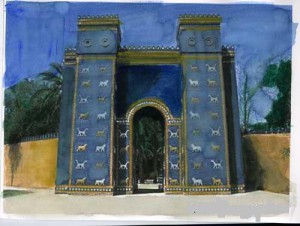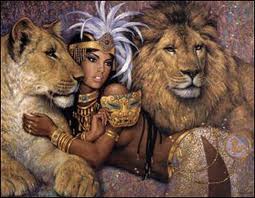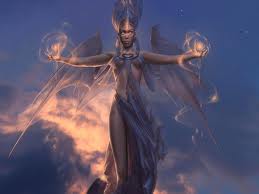Goddess Ishtar
My name is Ishtar, and I am the modern incarnation of the Goddess of the same name worshipped by the Sumerians, Akkadians, Babylonians, and Assyrians in the days of the first cites. I am from nowhere and everywhere.

The doorways of my temple are open to gays, sissy boys, sluts, losers. To those who know that their darker sides need to be controlled by a will stronger than their own.
Ishtar is the goddess of love and war, above all associated with sexuality: her cult involved sacred prostitution; her holy city Uruk is called the “town of the sacred courtesans”; and she herself was the “courtesan of the gods”. Ishtar has many lovers; however, as Guirand notes,
“Woe to him whom Ishtar have honored! The fickle goddess treats her passing lovers cruelly, and the unhappy wretches usually pay dearly for the favors heaped on them. Animals, enslaved by love, lose their native vigor: they fall into traps laid by men or are domesticated by them. ‘Thou has loved the lion, mighty in strength’, says the hero Gilgamesh to Ishtar, ‘and thou hast dug for him seven and seven pits! Thou hast loved the steed, proud in battle, and destined him for the halter, the goad, and the whip.’ Even for the gods, Ishtar’s love is fatal. In her youth the goddess had loved Tammuz, God of the harvest, and—if one is to believe Gilgamesh—this love caused the death of Tammuz.
Ishtar is the daughter of Ninurta. She is particularly worshipped at the Assyrian cities of Nineveh, Ashur and Arbela (Erbil).
Besides the lions on her gate, her symbol is an eight-pointed star.
Ishtar holding her weapon, Louvre Museum
One type of depiction of Ishtar/Inanna
The lion is her symbol (detail of the Ishtar Gate). She is the divine personification of the planet Venus”.
If thou openest not the gate to let me enter,
I will break the door, I will wrench the lock,
I will smash the door-posts, I will force the doors.
I will bring up the dead to eat the living.
And the dead will outnumber the living.


